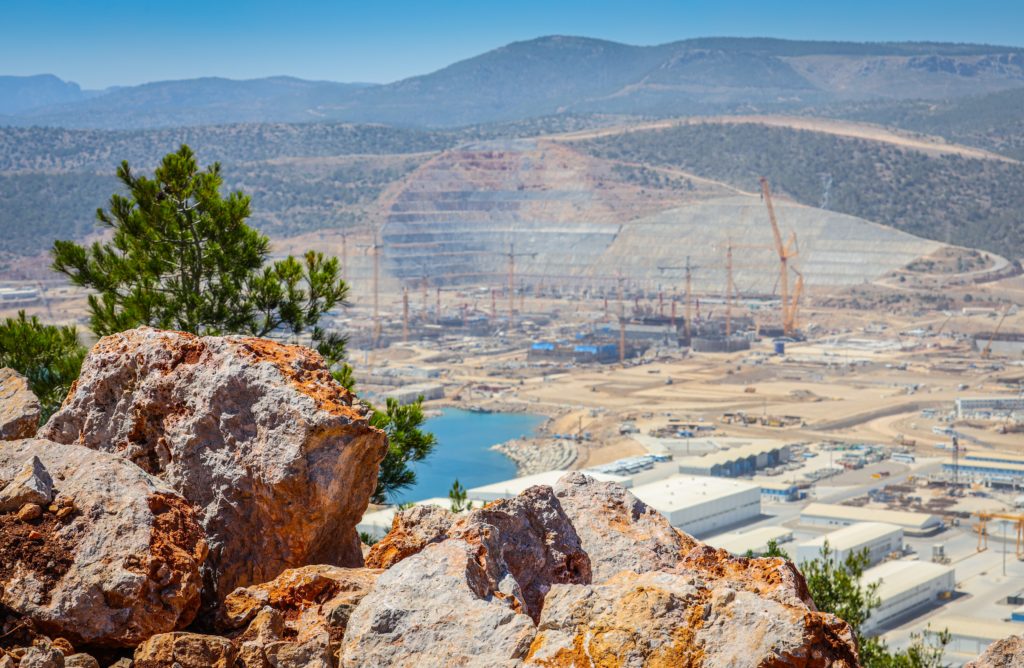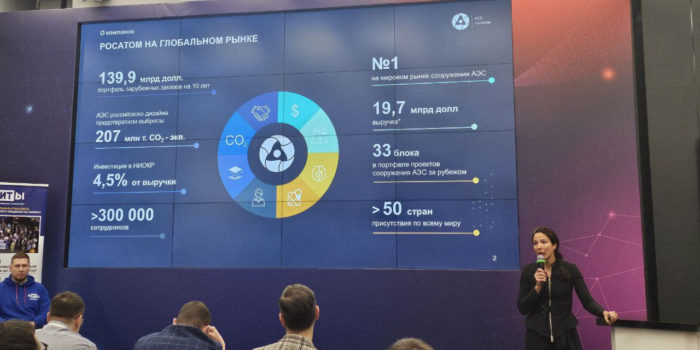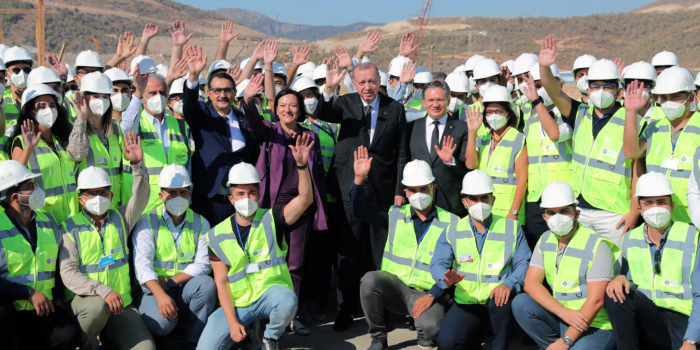The Akkuyu Nuclear Power Plant is designed to withstand an earthquake with a 9-point intensity on the MSK-64 scale. It is also capable of withstanding extreme external impacts, such as floods, tsunamis and hurricanes, or their combinations. The Akkuyu NPP will use Russian-designed Generation III+ VVER-1200 reactors, which are the world’s safest today.
The VVER-1200 reactor technology integrates a number of design, engineering and structural solutions aimed at improving safety of nuclear power plants.
All current Russian VVER reactors have a system of shells – a containment – designed to survive extreme impacts. The containment consists of an outer reinforced concrete wall and an inner shell, which ensures tightness and can withstand a 30 kPa shock wave. For this purpose, the shell is made of prestressed concrete: steel cables stretched inside the concrete shell make it more robust and shock-proof, including during an earthquake.
Another protection device integrated into the VVER reactor design is a core melt trap, also known as a core catcher. The core catcher is a 144-ton steel cone-shaped vessel that, in the event of an emergency, retains corium and prevents its fragments from escaping beyond the reactor containment.
The core catcher is filled with special ‘sacrificial’ materials that make the corium lose some of its accumulated heat. Chemical processes initiated by the contact with these materials retain the corium and cool it down. With its enhanced seismic, hydrodynamic and impact resistance properties, the core catcher ensures maximum safety.
What makes VVER reactors really different is an unparalleled combination of safety systems, such as a spent fuel pool inside the containment, containment ventilation filters, a core melt trap, and an advanced heat removal system. With all those systems in place, current VVER reactors can be rightfully referred to Generation III+.
Power units with VVER-1200 reactors meet the IAEA post-Fukushima requirements. Such power units are operated at the Leningrad and Novovoronezh nuclear plants in Russia and at the Belarus NPP.
According to Turkey’s Earthquake Map compiled by the Disaster and Emergency Management Presidency (AFAD), the Akkuyu site is located in a Category 5 area, that is, in the area least prone to earthquakes. The site for Turkey’s first nuclear power plant had been selected long before Russia and Turkey signed an intergovernmental agreement on May 12, 2010.
Seismic and geological studies to select the site for the country’s first nuclear power plant were initiated in 1968. The seismic studies were conducted under the auspices of the Turkish Electricity Authority (TEK) by the Geological Department of the Mineral Research and Exploration Institute (MTA), Earthquake Engineering Research Center (EERC) of the Middle East Technical University (METU), Geophysical Department of the Istanbul Technical University (ITU) Faculty of Mines, and an ad-hoc engineering consulting consortium between the Swiss company Emch+Berger, and Basler & Hofmann. In 1975, TEK issued a report presenting the results of geological studies in the Akkuyu area. This and other reports published in 1975–1986 contain the results of seismic hazard assessments for the area with a 320 km radius. In 1976, TEK issued a license for the Akkuyu NPP site based on the criteria of external natural impacts, primarily related to earthquakes, and other conditions. The choice of the nuclear plant construction site was also based on the international and national requirements and standards. In 1975–1980, the Akkuyu site surveys, which began in 1975, were carried out by Emch+Berger, Turkish organizations and universities. After 1980, the surveys were continued by institutions, companies and universities of the Republic of Turkey. Over 200 reports on the results of the Akkuyu site surveys were issued, and more than 20 of them included assessments of the seismic activity in the region. In 1989–1990, the Middle East Technical University (METU) and Boğaziçi University also evaluated the 4-year (1986–1989) studies of tectonic movements and seismic activity at the Akkuyu site. The IAEA mission reviewed the reports provided by the Republic of Turkey and confirmed the siting assessments for the nuclear power plant.

In 2011–2017, engineering surveys were carried out once again to adjust the available results for the current Turkish and Russian laws and regulations, and the IAEA recommendations. In preparations for the Akkuyu NPP construction, extended geological, geophysical and geotechnical surveys were conducted at and around the Akkuyu site, covering the territory spanning 300 km around the site, surrounding areas within a 25 km radius, adjacent areas within a 5 km radius, and the construction site itself.
In order to verify data accuracy and exclude potential errors, seismic hazard surveys were conducted by four independent research teams: Boğaziçi University Kandilli Observatory and Earthquake Research Institute (KRDAE, Turkey), the Schmidt Institute of Physics of the Earth of the Russian Academy of Sciences (Russia), Worley Parsons (Europe), and RIZZO (USA).
The surveys confirmed that the Akkuyu site complies with all the existing regulatory requirements for the construction of nuclear power plants.
The engineering survey results were used to prepare an environmental impact assessment report and an updated site assessment report. These documents were approved by the Turkish Atomic Energy Authority (TAEK) and the Ministry of Environment and Urban Planning.
Natural processes and phenomena included in the design basis of the Akkuyu NPP, as well as anthropogenic factors and seismic activity at and around the site are continuously monitored during the construction phase and will continue to be monitored during the operation and after the decommissioning of the nuclear power plant.





